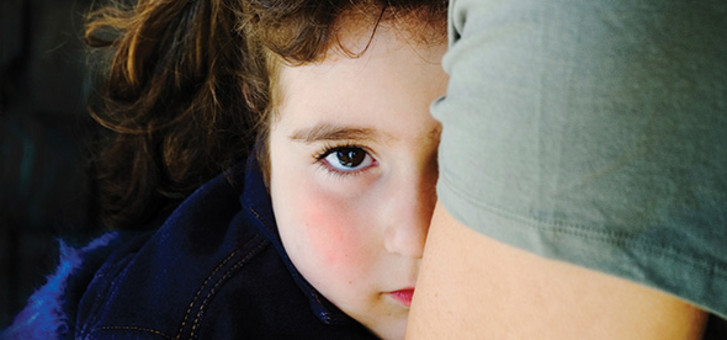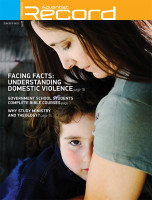It’s a growing problem
Official statistics show the number of violent crimes in Australia and New Zealand is gradually decreasing. In Australia, about 1 per cent of the population (184,300 people) experienced physical or sexual violence from an intimate partner during 2012—the statistic from 2005 is essentially the same.1In New Zealand, a drop from 5 per cent to 3 per cent in physical abuse from a partner occurred between 2008 and 2013, while sexual abuse from a partner stayed steady at 1 per cent.2
If you live in Papua New Guinea (PNG), however, the story is very different. Accurate statistics are harder to come by but research suggests that two-thirds of women (66-70 per cent) have suffered violence from an intimate partner at some point in their lives—in some areas of PNG the percentage climbs close to 100 per cent.3 Police Chief Inspector Miriam Yawa suggests that urbanisation and the replacement of traditional bride price practices by the cash economy have left women vulnerable: “The conclusion we are faced with is that the incidence and severity of family violence is increasing whilst traditional and cultural protections against it are decreasing.”4
Other nations in the South Pacific region are also experiencing cultural change, are beginning to discuss domestic violence issues openly and are developing legal frameworks to deal with the issue. One consequence of this is that the reporting of domestic violence incidents is growing rapidly. In Tonga, for example, police statistics for domestic violence increased fivefold between 2007 and 2010.5
So is the incidence of domestic violence growing? Well, where communities are experiencing rapid cultural change and a growing awareness of domestic violence, we will see increases in reported and, sadly, actual abuse. But where communities are stable and have a legacy of domestic violence intervention, we can expect numbers to stabilise and even drop as social attitudes change. There is hope for the future.
It’s a political beat-up
The idea that domestic violence is a man-hating conspiracy dreamed up by hairy femo-nazis is not borne out by the evidence. In fact, if anything, there’s a lack of political attention on domestic violence in comparison with other issues. In the US, the startling fact is that the number of women killed by men every year is about the same as the number of people killed in the 9/11 terrorist attacks.6 It doesn’t take a genius to see the yawning chasm between the financial resources thrown at the ensuing “war on terror” and the paltry sums doled out for domestic violence services. In Australia, for example, the wealthiest nation in our region, it’s estimated that half of the women seeking accommodation at domestic violence shelters are turned away—there just aren’t enough beds.7
It’s a women’s issue
This belief is at the source of much of the politicised argumentation around domestic violence. Let’s look at the facts:
In Australia, an estimated 17 per cent of all women aged 18 years and over (1,479,900 women) and 5 per cent of all men aged 18 years and over (448,000 men) have experienced violence by a partner since the age of 15.8
In New Zealand, women (26 per cent) were more likely than men (14 per cent) to have experienced one or more incidents of partner violence at some point during their lives.9
In Australia, 0.5 per cent of men have experienced sexual violence from a partner since the age of 15. For women, the percentage is 5 per cent.10
In New Zealand, 14 per cent of women experienced one or more “coercive and controlling behaviours” during 2014. For men, the percentage is 17 per cent.11
In the light of these stats, we have to admit that both men and women can suffer abuse. We also have to admit that men are more often violent than women, and in different ways. This complex reality should discourage us from simplistic explanations that domestic violence can only be understood in terms of male domination or, alternatively, that gender has nothing to do with it.
Labelling domestic violence a “women’s issue” is unhelpful for three reasons. Firstly, it doesn’t reflect the full range of abuse occurring in family environments; secondly, it sets up divisive stereotypes that paint women as passive victims and men as inherently aggressive, and; thirdly, it provides an excuse to walk away from the problem in the expectation that women’s groups will fix it.
If, in the Adventist Church, we expect Women’s Ministries leaders and Dorcas societies to do all the heavy lifting, we will struggle to improve the situation. Domestic violence needs to be tackled in a unified way by pastors, elders, men’s groups and Family Ministries leaders, as well as by women’s groups.

It’s a relationship problem
There’s a common perception that the solution to domestic violence is marriage counselling that will help the husband and wife to express their feelings and sort out their disagreements. What this fails to recognise is that ongoing abuse creates an imbalance in power that distorts the relationship to the extent that effective communication is well-nigh impossible. It’s like a human rights investigator asking a prisoner about claims of torture in the presence of their interrogator—the process is unlikely to produce accurate answers.
Sadly, although we hate to see spouses separate, the physical and/or emotional safety of the partner being abused needs to be paramount, along with the safety of any children who, even if they are not directly witnessing physical abuse, are still affected by the belittling, blaming or threatening strategies used by the abuser to maintain control. Separation—be it temporary or permanent—allows safe places to be created where healing can begin and the power imbalance can be addressed.
Separation is often a difficult time when church friends and leaders may feel pressured to “take sides” or worry about getting enmeshed in the problem. It’s also a high-risk time, when a perpetrator may increase the severity of the abuse in a desperate attempt to maintain control. Safe, wise and compassionate strategies are needed to support both parties—this is when the love of a healthy church community can be seen in full flower; or unfortunately, when a nervous, privacy-valuing, “respectable” church community fails to take any meaningful action.
It’s a non-Adventist problem
Earlier this year a woman came to worship with her Adventist congregation—a church whose location shall remain nameless. Once again she had a visible injury, this time a prominent black eye, and once again the other church members studiously ignored it. Usually she attends by herself, but occasionally her husband comes along—the congregation usually greets him warmly, excited to see a “seeker” in attendance.
Just recently members of this congregation participated in a domestic violence awareness march, lending their support to the denomination’s official motto: “EnditNow: Adventists Say No to Violence Against Women”. Are they blind to the signs that one of their own is silently suffering in their midst? Or do they notice, but just don’t know what to say or do about it?
The EnditNow campaign materials reveal some bracing facts: “Domestic violence has been documented as a major issue within the Seventh-day Adventist Church. Incidences of abuse follow trends documented in non-Adventist populations.”12 Sadly, we’re not immune. Most Adventists are not prone to alcoholic rages and are sympathetic to the Church’s tradition of non-combatancy in times of war, but we still manage to find plenty of excuses to justify hurting those we love.
The next step
Yes, the Adventist Church is responding to the scourge of domestic violence, and not just through the awareness-raising work of EnditNow. The Adventist Development and Relief Agency (ADRA) funds four domestic violence shelters in various states of Australia and also runs a counselling service in Western Sydney where people struggling with abuse can receive expert help. There’s even talk of setting up domestic violence services in Pacific island countries—a much-needed development.
But what about individual Adventist congregations and families? What’s the next step?








